#icelandic fairy tale
Explore tagged Tumblr posts
Text
Obviously a little early, but I'm working on an illustrated children's book based on the Icelandic Yule Lads


#fairy tale art#fairy tale#sheep cote clod#sheep cote clod yule lad#yule lad#icelandic folklore#icelandic mythology#icelandic myth#icelandic fairy tale#gully gawk#gully gawk yule lad
1 note
·
View note
Text
I'm now reading another of Heidi Ann Heiner's fairy tale collections. Sleeping Beauties: Sleeping Beauty and Snow White Tales from Around the World. Since I enjoyed Cinderella Tales from Around the World so much, I couldn't resist opening another of Heiner's books.
The first part of the book is devoted to the different international versions of Sleeping Beauty, the second part to the different versions of Snow White. This is followed by other tales of "sleeping beauties" that don't fit nearly into either category.
We start with the medieval Sleeping Beauty prototype tales from the 13th and 14th centuries.
*The earliest known prototype of the Sleeping Beauty story is the Norse and Germanic legend of Brynhild (a.k.a. Brunhild, Brunhilda, Brünnhilde, or other variations). This legend first appears in the Poetic Edda, the Prose Edda, and the Volsunga Saga from 13th century Iceland. It also appears in the German Nibelungenlied (although that version doesn't include the enchanted sleep), and its most famous modern adaptation is in Richard Wagner's four-opera cycle Der Ring des Nibelungen. The figure of Brynhild also inspired the Marvel superheroine Valkyrie.
**The Sleeping Beauty-like portion of the legend is this. The beautiful and strong-willed Brynhild is one of the valkyries, the warrior maiden servants (and in some versions daughters) of Odin (or Woden, Wotan, etc.) who preside over battlefields and bring the souls of fallen heroes to Valhalla. But Brynhild disobeys Odin by saving (or trying to save) the life of a warrior who was marked for death. (The man's identity, why he was meant to die, why she defends him, and whether she succeeds in saving him or not varies between versions.) As punishment, Odin banishes her to the mortal realm, pricks her with a "sleep thorn," and places her in a castle (or just on a rock) surrounded by a ring of fire, condemning her to sleep until a man brave enough to venture through the flames arrives to wake her and become her husband. (In some versions, she has attendants and servants who all sleep along with her.) Many years later, the fearless hero Sigurd, or Siegfried, succeeds in passing unharmed through the flames and wakes Brynhild by cutting off her valkyrie armor (or in later retellings influenced by Sleeping Beauty, with a kiss). The couple doesn't live happily ever after, however: their further adventures and eventual tragic fates are a story for another day.
**Even though it's a well-known fact that in "the original Sleeping Beauty stories," the prince (or his counterpart) impregnates the sleeping heroine and she wakes after she gives birth, no such thing happens in this earliest proto-version. If we assume that this really is the Western world's first tale of a heroine in an enchanted sleep, then it seems as if that sordid detail was a later addition.
*Next in Heiner's book come several medieval French Sleeping Beauty tales, mostly from Arthurian romances. These are the tales where we first see the motif of the heroine's love interest raping her in her sleep and fathering a child. Since few of them have ever been translated into modern English, the book simply summarizes them instead of printing them in full.
**The best-known of these stories, which most resembles Sleeping Beauty as we know it today, is the tale of Troylus and Zellandine from Le Roman de Perceforest, an Arthurian romance from 14th or 15th century France. In this tale, a knight named Troylus loves a princess named Zellandine. Then he learns that while spinning, Zellandine has suddenly fallen into a deep sleep, from which no one can wake her. With the help of a spirit named Zephir and the goddess Venus, Troylus enters the tower where she lies and, at Venus's urging, he takes her virginity. Nine months later, Zellandine gives birth to a son, and when the baby sucks on her finger, she wakes. Zellandine's aunt now arrives, and reveals the whole backstory, which only she knew. When Zellandine was born, the goddesses Lucina, Themis, and Venus came to bless her. As was customary, a meal was set out for the three goddesses, but then the room was left empty so they could enter, dine, and give their blessings unseen; but the aunt hid behind the door and overheard them. Themis received a second-rate dinner knife compared to those of the other two, so she cursed the princess to someday catch a splinter of flax in her finger while spinning, fall into a deep sleep, and never awaken. But Venus altered the curse so that it could be broken and promised to ensure that it would be. When the baby sucked Zellandine's finger, he sucked out the splinter of flax. Eventually, Zellandine and Troylus reunite, marry, and become ancestors of Sir Lancelot.
***This tale provides some answers for questions that the traditional Sleeping Beauty raises. In the familiar tale, the king, the queen, and their court know about the curse, so why do they keep it a secret from the princess? Yes, they avoid upsetting her by doing so, but the end result is that when she finally sees a spindle, she doesn't know to beware of it. Why not warn her? And why is there a random old woman in the castle, spinning with presumably the kingdom's one spindle that wasn't destroyed, and why, despite living in the castle does she not know about the curse? (It's no wonder that most adaptations make her the fairy who cursed the princess in disguise.) Yet in this earlier version, there are no such questions: no one except the eavesdropping aunt knows about the curse, because it was cast in private, so no one can take precautions against it. Another standout details is the fact that Zellandine's sleep doesn't last for many years, and that the man who wakes her already loved her before she fell asleep. Disney didn't create those twists after all!
**The other medieval French Sleeping Beauty tales are Pandragus and Libanor (where Princess Libanor's enchanted sleep only lasts one night, just long enough for Pandragus to impregnate her), Brother of Joy and Sister of Pleasure (where the princess isn't asleep, but dead – yet somehow the prince still impregnates her – and is revived by an herb that a bird carries to her), and Blandin de Cornoalha (a knight who, refreshingly, doesn't impregnate the sleeping maiden Brianda, but breaks her spell by bringing a white hawk to her side).
*All of these early Sleeping Beauty tales are just one part of bigger poetic sagas. Maybe this explains why Sleeping Beauty is fairly light on plot compared to other famous fairy tales (i.e. we're told what's going to happen, and then it does happen, and it all seems inevitable from the start). Of course one argument is that it's a symbolic tale: symbolic of a young girl's coming-of-age, as the princess's childhood ends when she falls asleep and her adulthood begins when she wakes, and/or symbolic of the seasons, with the princess as a Persephone-like figure whose sleep represents winter and whose awakening represents spring. That's all valid. But maybe another reason for the flimsy plot is that the earliest versions of the tale were never meant to stand alone. They were just episodes in much longer and more complex narratives.
@ariel-seagull-wings, @adarkrainbow, @themousefromfantasyland
#sleeping beauty#fairy tale#variations#sleeping beauties: sleeping beauty and snow white tales from around the world#heidi ann heiner#norway#iceland#germany#norse mythology#france#england#italy#tw: rape#tw: cannibalism
45 notes
·
View notes
Text








youtube
#iceland#akureyri#solo travel#mine#aurora#mural#church#water slide#bautinn#dimmalimm#viking beer#heart of akureyri#fairy tale figure#blaa kannan#nonnahus#svalbardskirja#Youtube
2 notes
·
View notes
Text
Ice "elves" or "ice nymphs" 🧊 are like ice fairies without wings. Just like fairies, elves/nymphs also have "hierarchies".




(Pictured: Jeremy Renner, Jamie Bell)
https://spiritsurfers.substack.com/p/who-are-the-ice-queens-kings
#fantasycore#spirituality#spiritualgrowth#fairy tale#spiritual awakening#fae#fairycore#faerie#fairies#fairy aesthetic#half elf#dark elf#elf#fantasy art#fantasy character#elves#tolkien elves#middle earth#night elves#dark elves#lotr elves#snow#iceland#jeremy renner#jamie bell
2 notes
·
View notes
Text

youtube
#movie#film#cinema#Icelandic cinema#medieval fantasy#Youtube#drama film#Icelandic film#foreign film#international film#Nietzchka Keene#Björk#Brothers Grimm#fairy tales#pagan#paganism#witchcraft#pagan witch#witchcraft fairy tale#movie poster#film poster#movie trailer#film trailer#The Juniper Tree
2 notes
·
View notes
Text
Hildur, the Queen of the Elves
As told by Jón Arnason, translated by George E. J. Powell and Eiríkur Magnússon

Once, in a mountainous district, there lived a certain farmer, whose name and that of his farm have not been handed down to us; so we cannot tell them. He was unmarried, and had a housekeeper named Hildur, concerning whose family and descent he knew whatever. She had all the indoor affairs of the farm under her charge, and managed them wondrous well. All the inmates of the house, the farmer himself to boot, were found of her, as she was clean and thrifty in her habits, and kind and gentle in speech.
Everything about the place flourished exceedingly, but the farmer always found the greatest difficulty in hiring a herdsman; a very important matter, as the well-being of the farm depended not a little on the care of the sheep. This difficulty did not arise from any fault of the farmer’s own, or from neglect on the part of the housekeeper to the comforts of the servants, but from the fact, that no herdsman who entered his service lived more than a year, each one being without fail found dead in his bed, on the morning of Christmas day. No wonder, therefore, the farmer found herdsmen scarce.
In those times it was the custom of the country to spend the night of the Christmas Eve at church, and this occasion for service was looked upon as a very solemn one. But so far was this farm from the church, that the herdsmen, who did not return from their flocks till late in the evening, were unable to go to it on that night until long after the usual time; and as for Hildur, she always remained behind to take care of the house, and always had so much to do in the way of cleaning the rooms and dealing out the rations for the servants, that the family used to come home from church and go to bed long before she had finished her work, and was able to go to bed herself.
The more of the reports of the death of the herdsman after herdsman, on the night of Christmas eve, were spread abroad, the greater became the difficulty the farmer found in hiring one, although it was never supposed for an instant that violence was used towards the men, as no mark had ever been found on their bodies; and as, moreover, there was no one to suspect. At length the farmer declared that his conscience would no longer let him thus hire men only in order that they might die, so he determined in future to let luck take care of his sheep, or the sheep take care of themselves.
Not long after he had made his determination, a bold and hardy-looking man came to him and made hi a proffer of his services. The farmer said:
“My good friend, I am not in so great need of your services as to hire you.”
Then the man asked him, “Have you, then, taken a herdsman for this winter?”
The farmer said, “No; for I suppose you know what a terrible fate has hitherto befallen every one I have hired.”
“I have heard of it”, said the other, “but the fear of it shall neither trouble me nor prevent my keeping your sheep this winter for you, if you will but make up your mind to take me.”
But the farmer would not hear of it at first; “For,” said he, “it is a pity, indeed, that so fine a fellow as you should lose your chance of life. Begone, if you are wise, and get work elsewhere.”
Yet still the man declared, again and again, that he cared not a whit for the terrors of Christmas eve, and still urged the farmer to hire him.
At length the farmer consented, in answer to the man’s urgent prayer, to take him as herdsman; and very well they agreed together. For everyone, both high and low, liked the man, as he was honest and open, zealous in everything, he laid his hand to, and willing to do anyone a good turn, if need were.
On Christmas Eve, towards nightfall, the farmer and all his family went (as has been before declared to be the custom) to church, except Hildur, who remained behind to look after the housholdmatters, and the herdsman,who could not leave his sheep in time. Late in the evening, the latter as usual returned home, and after having eaten his supper, went to bed. As soon as he was well between the sheets, the remembrance struck him of what had befallen all the former herdsmen all the former herdsmen in his position on the same evening, and he thought it would be the best plan for him to lie awake and thus to b ready for any accident, though he was mighty little troubled with fear.
Quite late at night, he heard the farmer and his family return from church, enter the house, and having taken supper, go to bed. Still, nothing happened, except that whenever he closed his eyes for a moment, a strange and deadly faintness stole over him, which only acted as one reason the more for his doing his best to keep awake.
Shortly after he had become aware of these feelings, he heard someone creep stealthily up to the side of his bed, and looking through the gloom at the figure, fancied he recognized Hildur the housekeeper.
So he feigned to be fast asleep, and felt her place something in his mouth, which he knew instantly to be the bit of a magic bridle, but yet allowed her to fix it on him, without moving.
When she had fastened the bridle, she dragged him from his bed with it, and out of the farmhouse, without his being either able or willing to make the least resistance. Then mounting on his back, she made him rise from the ground as if on wings, and rode him through the air, till they arrived at a huge and awful precipice, which yawned, like a great well, down into the earth.
She dismounted at a large stone, and fastening the reins to it, leaped into the precipice. But the herdsman, objecting strongly to being tied to this stone all night, and thinking to himself that it would be no bad thing to know what became of the woman, tried to escape, bridle and all, from the stone. This he found, however, to be impossible, for as long as the bit was in his mouth, he was quite powerless to get away. So he managed, after a short struggle, to get the bridle off his head, and having so done, leapt into the precipice, down which he had seen Hildur disappear. After sinking for a long, long time, he caught a glimpse of Hildur beneath him, and at least they came to some beautiful green meadows.
From all this, the man guessed that Hildur was by no means a common mortal, as she had before made believe to be, and feared if he were to follow her along these green fields, and she turn round and catch sight of him, he might, not unlikely, pay for his curiosity with his life. So he took a magic stone which he always carried about him, the nature of which was to make him invisible when he held it in his palm, and placing in it the hollow of his hand, ran after her with all his strength.
When they had gone some way along the meadows, a splendid palace rose before them, with the way to which Hildur seemed perfectly acquainted. At her approach a great crowd of people came forth from the doors, and saluted Hildur with respect and joy. Foremost of these walked a man of kingly and noble aspect, whose salutation seemed to be that of a lover or a husband: all the rest bowed to her as if she were their queen. This man was accompanied by two children, who ran up to Hildur, calling her mother, and embraced her. After the people had welcomed their queen, they all returned to the palace, where they dressed her in royal robes, and loaded her hands with costly rings and bracelets.
The herdsman followed the crowd, and posted himself where he would be least in the way of the company, but where he could catch sight easily of all that passed, and lose nothing.
So gorgeous and dazzling were the hangings of the hall, and the silver and golden vessels on the table, that he thought he had never, in all his life before, seen the like; not to mention the wonderful dishes and wines which seemed plentiful there, and which, only by the look of them, filled his mouth with water, while he would much rather have filled it with something else.
After he had waited a little time, Hildur appeared in the hall, and all the assembled guests were begged to take their seats, while Hildur sat on her throne beside the king; after which all the people of the court ranged themselves o each side of the royal couple, and the feast commenced.
When it was concluded, the various guests amused themselves, some by dancing, some by singing, other by drinking and revel; but the king and queen talked together, and seemed to the herdsman to be very sad.

While they were thus conversing, three children, younger than those the man had seen before, ran in, and clung round the neck of their mother. Hildur received them with all a mother’s love, and, as the youngest was restless, put it on the ground and gave it one of her rings to play with.
After the little one had played a while with the ring he lost it, and it rolled along the floor towards the herdsman, who, being invisible, picked it up without being perceived, and put it carefully into his pocket. Of course all search for it by the gusts was in vain.
When the night advanced, Hildur made preparations for departure, at which the assembled showed great sorrow, and begged her to remain longer.
Th herdsman had observed, that in one corner of the hall sat an old and ugly woman, who had neither received the queen with joy nor pressed her to stay longer.
As soon as the king perceived that Hildur addressed herself to her journey, and that neither his entreaties nor those of the assembly could induce her to stay, he went up to the old woman, and said to her:
“Mother, rid us now of thy curse; cause no longer my queen to live apart and afar from me. Surely her short and rare visits are more pain to me than joy.”
The old woman answered him with a wrathful face.
“Never will I depart from what I have said. My words shall hold true in all their force, and on no condition will I abolish my curse.”
On this the king turned from her, and going up to his wife, entreated her in the fondest and most loving terms not to depart from him.
The queen answered, “The infernal power of thy mother’s curse forces me to go, and perchance this may be the last time I shall see thee. For lying, as I do, under this horrible ban, it is not possible that my constant murders can remain such longer secret, and then I must suffer the full penalty of crimes which I have committed against my will.”
While she was thus speaking the herdsman sped from the palace and across the fields to the precipice, up which he mounted as rapidly as he had come down, thanks to the magic stone.
When he arrived at the rock he put the stone into his pocket, and the bridle over his head again, and awaited the coming of the elf queen. He had not long to wait, for very soon afterwards Hildur came up through the abyss, and mounted on his back, and off they flew again to the farmhouse, where, Hildur, taking the bridle from his head, placed him again in his bed, and retired to her own. The herdsman, who by this time was well tired out, now considered it safe to go to sleep, which he did, so soundly as not to wake till quite late on Christmas morning.
Early that same day the farmer rose, agitated and filled with fear that, instead of passing Christmas in joy, he should assuredly, as he so often had before, find his herdsman dead, and pass it in sorrow and mourning. So he and all the rest of the family went to the bedside of the herdsman.
When the farmer had looked at him and found him breathing, he praised God aloud for his mercy in preserving the man from death.
Not long afterwards the man himself awoke and got up.
Wondering at his strange preservation the farmer asked him how he had passed the night, and whether he had seen or heard anything.
The man replied, “No; but I have had a very curious dream.”
“What was it?” asked the farmer.
Upon which the man related everything that had passed in the night, circumstance for circumstance, and word for word, as well as he could remember. When he had finished his story every one was silent for wonder, except for Hildur, who went up to him and said:
“I declare you to be a liar in all that you have said, unless you can prove it by sure evidence.”
Not in the least abashed, the herdsman took from his pocket the ring which he had picked up on the floor of the hall in Elf-land, and showing it to her said:
“Through my dream needs no proof, yet here is one you will not doubtless deem other than a sure one; for is not your gold ring, Queen Hildur?”
Hildur answered, “It is, no doubt, my ring. Happy man! May you prosper in all you undertake, for you have released me from the awful yoke which my mother-in-law laid, in her wrath, upon me, and from the curse of a yearly murder.”
And then Hildur told them the story of her life as follow: -
“I was born of an obscure family among the elves. Our king fell in love with me and married me, in spite of the strong disapproval of his mother. She swore eternal hatred to me in her anger against her son, and said to him, ‘Short shall be your joy with this fair wife of yours, for you shall see her but once a year, and that only at the expense of a murder. This is my curse upon her, and it shall be carried out to the letter. She shall go and serve in the upper world, this queen, and every Christmas eve shall ride a man, one of her fellow servants, with his magic bridle, to the confines of Elf-land, where she shall pass a few hours with you, and then ride him back again till his very heart breaks with toil, and his very life leaves him. Let her thus enjoy her queenship.’
“And this horrible fate was to cling me until I should have these murders brought home to me, and be condemmed to death, or should meet with a gallant man, like this herdsman, who should have nerve and courage to follow me down tnto Elf-land, and be able to prove afterwards that he had been with me, and seen the customs of my people. And now I must confess that all the former herdsmen were slain by me, but no penalty shall touch me for their murders, as I committed them against my will. And as for you, O courageous man, who have dared, the first of human beings, to explore the realms of Elf-land, and have freed me from the yoke of this awful curse, I will reward you in times to come, but not now.
“A deep longing for my home and my loved one impels me hence. Farewell!”
With these words Hildur vanished from the sight of the astonished people, and was never seen again.
But our friend the herdsman, leaving the service of the farmer, built a farm for himself, and prospered, and became one of the chief men in the country, and always ascribed, with grateful thanks, his prosperity to Hildur, Queen of the Elves.
@ariel-seagull-wings @princesssarisa @amalthea9 @natache @tamisdava2
11 notes
·
View notes
Text
Icelandic: "A cat in a bog / stuck up its tail / the adventure is over" ("Köttur úti í mýri / setti upp á sér stýri / úti er ævintýri")
ending a story in other languages
kurdish: “my story went to other homes, god bless the mothers and fathers of its listeners” (Çîroka min çû diyaran, rehmet li dê û bavê guhdaran.)
greek: “and they lived well, and we lived better” (και ζήσανε αυτοί καλά και εμείς καλύτερα)
afrikaans: “whistle whistle, the story is done” (fluit fluit, die storie is uit)
goemai: “my tale has finished, (it) has returned to go (and) come home.” (tamtis noe lat / dok ba muaan yi wa)
amharic: “return my story and feed me bread” (ተረቴን መልሱ አፌን በዳቦ አብሱ::)
bengali: “my story ends and the spinach is eaten by the goat” (aamaar kothati furolo; Notey gaachhti murolo) *means something is irreversibly ended because goats eats herbs from the root
norwegian: “snip snap snout, the tale is finished” (snipp snapp snute, så er eventyret ute”
polish: “and i was there [at the wedding] too, and drank mead and wine.” (a ja tam byłem, miód i wino piłem.)
georgian: “disaster there, feast here… bran there, flour here…” (ჭირი – იქა, ლხინი – აქა, ქატო – იქა, ფქვილი – აქა)
hungarian: “this is the end, run away with it” (itt a vége, fuss el véle)
turkish: “lastly, three apples fell from the sky; one for our story’s heroes, one for the person who told their tale, and one for those who listened and promise to share. And with that, they all achieved their hearts’ desires. Let us now step up and settle into their thrones.” (Gökten üç elma düşmüş; biri onların, biri anlatanın, diğeri de dinleyenlerin başına. Onlar ermiş muradına, biz çıkalım kerevetine.)
#theres some other things you could say too but this is a typical one originating from story poems#which are a very important part of icelandic folklore/fairy tales. but at this point the phrase exists outside of poetry
35K notes
·
View notes
Text
Some free or inexpensive comprehensible input, audio and video lessons, and listening practice stuff for popular languages because idk I felt like googling some stuff today
Arabic: Yale k-16 interactive reading, Arabic Comprehensible, Egyptic
Bengali: Bangla Shekho, Bengali Fairy Tales
Chinese (Mandarin): Comprehensible Chinese, hackingchinese.com, Acquire Mandarin, Comprehensible Mandarin, Blabla Chinese, Easy Mandarin, Mandarin Click
English: English Comprehensible input for ESL beginners, Dreaming English, EnglishClass101, British Council LearnEnglish, News in Slow English
French: French Comprehensible Input, alice ayel, Easy French, innerfrench.com, Little Talk in Slow French, Francais Authentique
German: DW Learn German, Naturlich German, Comprehensible German, Easy German, Löwenzahn, Deutsch Direkt, Learn German With Falk
Greek (modern): Natural Languages TRPS Greek, Helinka, Hellinic American Union, Easy Greek, Greekpod101
Greek (ancient): Easy Latin (Greek Course), Alpha With Angela (biblical [Kione] Greek), Chihon Teaches, Ancient Greek in Action, Athenaze
Hebrew: The Hebrew Adventure, Free Hebrew (Biblical Hebrew), Hebrew Time, thehebrewcafe.com
Hindi: Comprehensible Hindi, HindiPod101, Hindi TV, Easy Hindi
Hungarian: FluentBox, Magyar Hungarian, Speak Hungarian With Angie, Easy Hungarian,
Icelandic: Icelandic For Foreigners, icelandiconline.com, Ylhyra, Viltu laera islensku,
Italian: Italian For Americans, Easy Italian, Learn Italian With Lucrezia, teacherstefano.com
Japanese: Comprehensible Japanese, DailyJapanese, Akane Japanese Class, iroironanihongo, Japanese Immersion With Asami, Speak Japanese Naturally, Learn Japanese with Tanaka san,
Korean: Comprehensible Input Korean, Korean Patch, Immersion in Korean, Intuit Korean, Learn Korean in Korean, Hello Jadoo, MAVOCA, Storytime in Korean, Talk to Me in 100% Korean
Latin: Easy Latin, ScorpioMartianus, Quomodo Dicitur?, Found In Antiquity, The London Latin Course
Portuguese: Teach Yourself Portuguese, The Sounds of Portuguese, Portuguese With Leo, Easy Portuguese
Russian: Comprehensible Russian, Easy Russian, About Russian in Russian, Russian With Max, Russian from Russia, Real Russian Club
Spanish: Dreaming Spanish, Teacher Catalina. Hola Spanish, Easy Spanish,
2K notes
·
View notes
Text
Top Recommendations for Norse Pagans that aren’t Problematic.
There is a lot of books by people who are racist and part of far right side of Heathenry and I’m going to try my best and list the books I have that helped me on my path that isn’t problematic and have questionable intentions. Books and YouTube channels.
Anglo Saxon Socerery and Magic by Alaric Albertson. He is very knowledgeable in his work and path especially on runes which includes the rune poem to make your own interpretation and witchcraft side of things. He even talks about the Elves which I appreciate because not a lot of Norse authors talk about them. It’s more Germanic than Norse but I can’t see any problem adopting certain aspects since they are very similar. I will say he does take himself a bit serious at times but his information is so good and worthwhile. I have not read his first book on Travels through middle earth but it focus on more the pagan side.
Poetic Edda and Prose Edda: it’s what every Norse pagan needs. It’s the foundation of Norse paganism not bibles but myths and tales that can help along our journey. There is tons of translations, but my favorites are Dr. Jackson Crawford Poetic Edda and Anthony Fawkes Prose Edda. But look into other sagas as well like Volsung which Dr Jackson Crawford also wrote about.
Beowulf. More of a Germanic tale but again includes it has roots of Germanic sorcery, traditions, religion like the concept of Wyrd (Fate), the runes, and values within his society like loyalty and mythical creatures. Again there is many translations even Jrr Tolkien did a incompleted version of Beowulf but I think Tom Shippey finished that version I could be wrong. Nonetheless explore more than one, the oneI have is by Seamus Heaney.
Grimm Fairy Tales this mostly German Folklore but it’s still quite important to learn about in German folk magic, creatures and entities in German folklore tends to be very real to the practitioner in their spellwork.
The Way of Fire and Ice by Ryan Smith a very progressive outlook in Norse paganism, he talks about creating communities in Norse paganism and calling out and denouncing Nazis in the community how Norse Paganism is inclusive and how to be open to all types of people. But he has a beginner approach to the deities, beliefs, values within Norse paganism.
Look into a lot of academic sources that’s where you will find a lot of information on Norse paganism and religions.
Tacitus Germania - A Roman historian talking about the Germanic tribes their culture and customs.
Saxo Grammaticus history of the Danes
The Viking Way by Neil Price it goes good in depths about magic in Scandinavia like Seidh
Dictionary of Norse Mythology a quick guide to northern myths, if you are trying to find a specific god and you don’t have time to look up in a book it’s in there with great information to each one.
Children of Ask and Elm: History of Vikings by Neil Price on Scandinavian culture during the Viking age
Some YouTube Channels
The Norse Witch: Bente lives in Germany and their channel encompasses all of Norse paganism more around magic. They do interviews with other Norse witches of folk magic like Icelandic and Danish. Even gives good book recommendations and advice on general spellwork as well!.
Dr Jackson Crawford he is an author but he also has a YouTube channel. He was a professor in Colorado on Norse culture, mythology, and language and now is a full time YouTuber. He did a series of videos on the runes which are more historically accurate. Discusses the myths and the language and what do they mean. Jackson Crawford isn’t a Norse pagan nor he doesn’t care if you are one but just letting you know he isn’t coming from a pagan perspective.
The Welsh Viking also like Jackson Crawford but still has really great knowledge on Viking culture.
De Spökenkyker who is a channel that focus on German Folk magic living in Germany who is a practicing German Folk Witch.
Please feel free to add on any recommendations that are helpful and useful to the Norse pagan Community!
679 notes
·
View notes
Text



some book covers i've made, all in one spot ✨
(The Thief of Memory by Sunyi Dean, All the Horses of Iceland by Sarah Tolmie, and Some Ways to Retell a Fairy Tale by Kathleen Jennings)
593 notes
·
View notes
Text
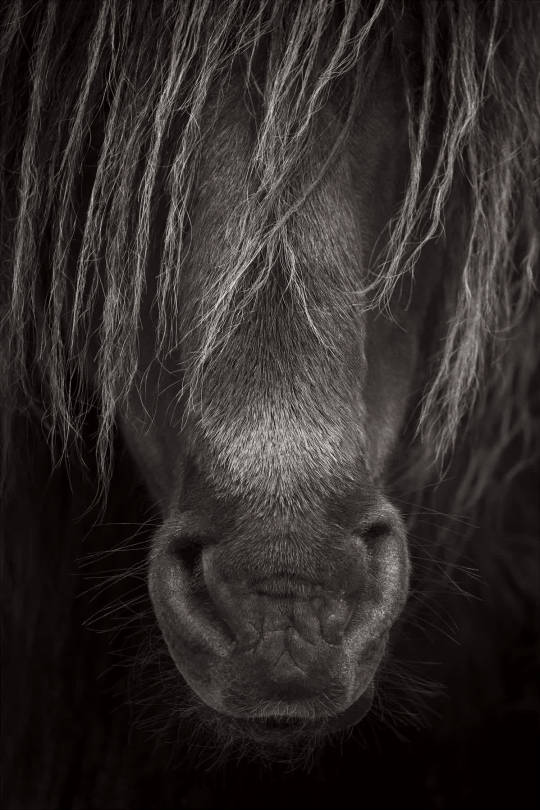
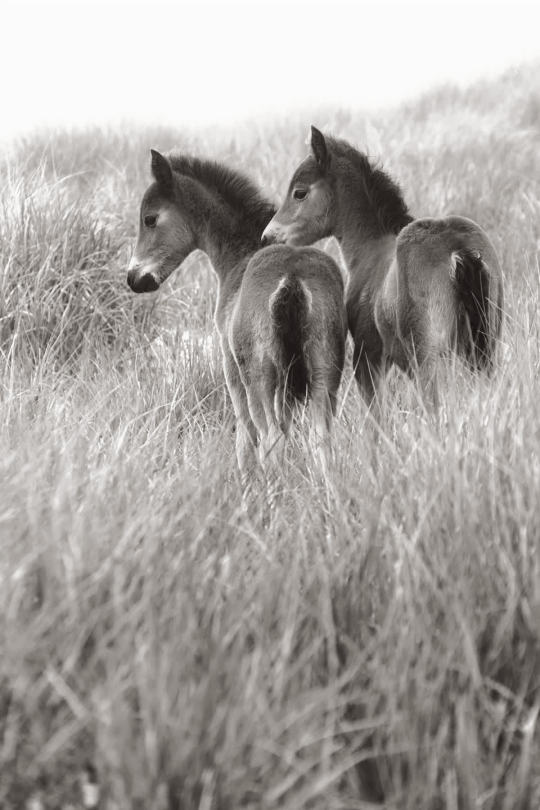
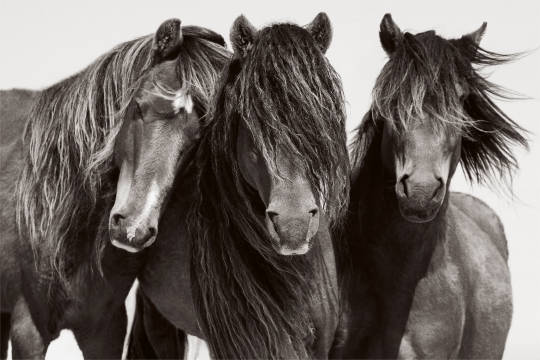
In the middle of the North Atlantic Ocean, about 100 miles from the Canadian province of Nova Scotia, there’s a small sliver of land that is populated entirely by wild horses.
These horses — about 450 of them — are the only full-time residents of Sable Island.
“There’s really nowhere else like it on Earth, and it’s one of those places that I think very easily puts you into perspective about our place in this world,” said Drew Doggett, a photographer and filmmaker who has been visiting the Canadian island for more than 10 years. “You’re on this teeny-tiny speck of sand in the middle of the North Atlantic, and you’ve never felt so small. Yet you’re amongst these animals that are thriving in this place that is nothing but sand and dune grasses and a few freshwater ponds.”
Canada’s Sable Island is home to hundreds of wild horses. No other species lives there year-round.
For more than 250 years, horses have been living on the remote, crescent-shaped island, which has a land area of just 13 square miles.
They’re one of the remarkable breeds Doggett photographed for his new coffee-table book “Untamed Spirits: Horses from Around the World.” His images celebrate the beauty and enduring appeal of horses by documenting some of the most exceptional on Earth.
“Their stories of survival and ability to thrive in these places — places that man oftentimes has not been able to — it’s awe-inspiring,” he said.

An Icelandic horse traverses a black sand beach. Iceland is “home to these extraordinary natural features that almost defy reality,” Doggett said.

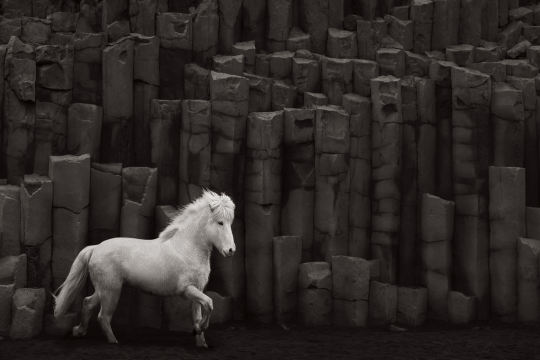
Some of Doggett’s most striking photos came out of Iceland, which is home to a rugged breed descended from the original Viking horse.
“They live a very surreal and otherworldly existence,” Doggett said. “There are some pretty remarkable geological features, from black sand beaches to dramatic waterfalls, that I wanted to photograph these horses amongst.”
The photos look like something out of a fairy tale or a fantasy novel, artfully shot in front of Iceland’s stunning backdrop.
“They’ve created their own fortune in this really difficult, yet beautiful land, and that’s something that attracted me to their story,” Doggett said.

Another breed that Doggett features in his book are the white horses of Camargue. This ancient breed is native to a remote, marshy area in the south of France, where it has roamed for centuries.
“Large, dark, expressive eyes and a palpable, innate confidence punctuate the raw, bold beauty of the Camargue horses,” Doggett says in his book. “They move swiftly, without hesitation, and charge through the water in the natural hierarchy that inevitably arises within their ranks.”
These horses are semi-wild, protected by herdsmen known as gardians, or “the cowboys of the Riviera.”
“There’s been cave paintings discovered in this region of these horses, (from) probably prehistoric times,” Doggett said. “So there’s this lineage that was fascinating.”
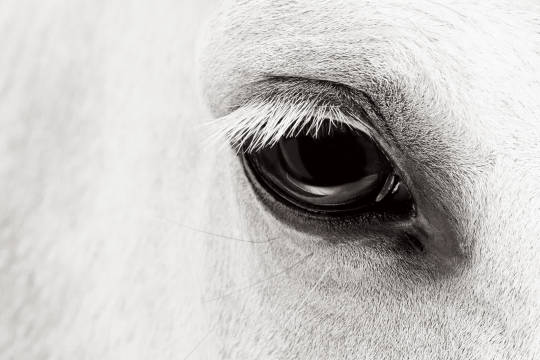

Doggett set up a studio in Florida to take portraits of sport horses.
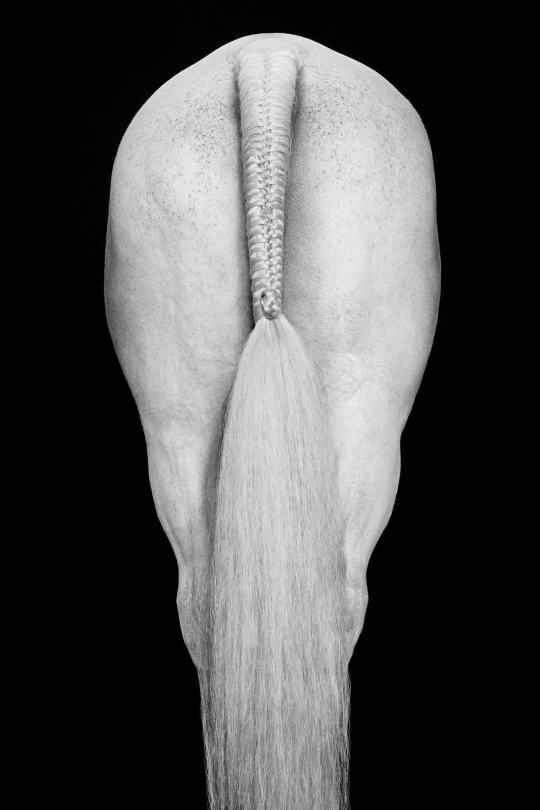
“I find it fascinating when wild animals have a similar domesticated counterpart,” Doggett said.
Wild breeds were Doggett’s initial fixation when he started this project, but his book also includes portraits of world-class sport horses from the equestrian world.
He set up a mobile studio in barns in Wellington, Florida, and drew on his background in fashion photography.
“I was focusing on the musculature of these horses almost as if they’re kind of carved from marble, and I was using studio lights, almost painting them with light,” he said. “I really enjoyed being able to hone in and focus on — in a very intensive way — the physical attributes of these elite animals.”

When Doggett wanted to do a series of images showing this musculature in motion, he went to the Caribbean and photographed horses swimming in the crystalline waters off the island of Tobago. He linked up with a nonprofit rescue group that cared for retired racehorses, polo horses and show jumpers.
“As their daily exercise, the owners of the nonprofit would swim them off the waters of the beach in Tobago,” he said. “This is part of their everyday existence.”
Doggett would put on scuba gear and take photos below the water’s surface — difficult, he said, but extremely rewarding.
“I felt like underwater was a way which I could highlight these animals’ elegance and grace in a minimalist backdrop,” he said.
Across all of his different photo shoots, Doggett felt there was a common theme among the horses — an untamed spirit that inspired the title of his book.
“Whether they’re domesticated or not, their wildness never truly disappears,” he said. “They also represent strength, resilience, courage, endurance — all these various qualities that I am drawn to and want to celebrate.”

“They represent a certain mythological and symbolic-like ideology that doesn’t really exist in other animals,” he said. “They’re respected and honored symbols around the world. …
“I think there’s something incredibly romantic about the notion that there are these animals out there which exist that are so strong and courageous yet their wildness can’t ever be tamed.”
Drew Doggett’s book “Untamed Spirits: Horses from Around the World,” published by teNeues, is now available.
34 notes
·
View notes
Note
I vaguely remember a version of the "Fool Who Went to Learn what Fear Was" fairy tale that followed all the conventional story beats, but who ended up learning about fear when he thought his own child did something dangerous and died (went missing)?
I can't for the life of me find this version, and I'm starting to think I made it up as something that I would have personally found satisfying growing up! Is this at all familiar to you? 😭
Oh dear, I love a mystery but I don't think I have an answer for this one! I don't know a version of this fairy tale with that ending, but taht doesn't mean you made it up!
There are a lot of variants of this tale type. They can roughly be divided into stories where the protagonist never finds fear and through fearlessness just wins his fortune, and stories where the protagonist does find fear, in an unusual way.
The Grimms popularised the version where the protagonist's wife empties a bucket of water with wriggling fish on him while he's asleep, so he finally learns how to shudder, but variants I know include:
Being scared by the firing of a cannon (Grimm, variant from Zwehrn)
Being terrified by having his head cut off and being magically restored to life with his head on backwards (Árnason, variant from Iceland)
Being afraid of the responsibility of being a king (Lang, variant from Turkey)
In modern adaptations they often try to add a more meaningful fright than Sudden Fish. In Faerie Tale Theatre they have him learn that he is scared of growing up and falling in love. But in Jim Henson's The Storyteller he learns what fear is when he comes home to find his sweetheart is dying from a broken heart since he left her behind. The fear of losing her is what makes him shudder. That's the closest to your ending I can think of.
You could have easily read, heard or seen a variant that can't be easily found online, but that was based on a more obscure version of this story, or that was adapted for that specific retelling!
#if anyone reading this knows where anon's fairy tale came from let us know!#fearnot#The Story of the Youth Who Went Forth to Learn What Fear Was#The Story of a Boy Who Went Forth to Learn Fear
10 notes
·
View notes
Text
The next set of tales I've read in Cinderella Tales from Around the World hail from Iceland, the Faroe Islands, and Denmark.
*One Icelandic tale, which Heiner's book features in three variations, is The Story of Mjadveig, the Daughter of Mani, also known as Stepmother Story. The heroine, Mjadveig, is a princess, and after her mother dies, her father King Mani's advisors urge him to remarry. In a foreign land he finds a charming widow and marries her. But unbeknownst to him, both the new queen and her own daughter are evil giantesses magically disguised as humans, and depending on the retelling, they either abuse Mjadveig or tie her up and abandon her in the wilderness. But either way, Mjadveig has a dream at night in which her mother advises her to follow a certain path, and the next day she obeys and finds a little house, where she lives in safety. On the way there, or at some point when she goes out, she loses a shoe. Soon afterward, a prince arrives from another land, and he finds the shoe, is struck by its delicacy, and sets out to find the owner. The giantess queen lies that it's her own daughter's and secretly cuts her daughter's foot to make it fit, but of course a bird reveals the truth to the prince, and then he finds Mjadveig and falls in love with her. He forces the giantess stepsister to appear in her true form, then kills her and tricks her mother into eating her flesh. This causes the queen to reveal her own giantess form, and the prince kills her too.
**One of the three variants ends with Mjadveig's marriage, but in the other two, some time later, she meets her dead stepmother's sister, an equally wicked giantess. The new giantess magically takes Mjadveig's shape to replace her, and sends the real Mjadveig to her brother, a giant who imprisons her under the sea. But a herdsman and a dwarf ultimately rescue her and return her to her husband, and the giant and giantess are killed. (This is obviously similar to Gaelic versions like Fair, Brown, and Trembling.)
*The book also includes another Icelandic story, The Tale of How Three Damsels Went to Fetch Fire, though this is less of a Cinderella story and more of a "Kind and Unkind Girls" story combined with Beauty and the Beast. There are three sisters, and both of their parents spoil the older two but abuse the youngest. One day each sister in turn goes out to fetch fire, and each in turn comes to a cave where a hideous yet polite giant and his dog live. Of course the older two sisters behave badly, but the youngest is kind despite her fear. The giant turns out to be an enchanted prince whose spell the youngest girl breaks, and he marries her.
*There's also one story from the Faroe Islands, The Girl Who Got Meat and Clothes in the Mound. Again, this is really more of a "Kind and Unkind Girls" tale. An abused and starved stepdaughter finds an earthen mound containing a table with rich food, remembers to thank God in prayer before she eats, and later she finds elegant clothes inside the mound, which attract the attention of a prince, who marries her; but when her stepsister goes to the mound, she eats without praying, and gets nothing more.
*Now we move on to Denmark. There are many different Danish Cinderella stories, but most of them include similar motifs.
**Most Danish Cinderellas are abused by a stepmother and one or two stepsisters. But some give her two biological sisters who abuse her after their father's death. Still others have her run away from her stepfamily, or be left all alone in the world after her father dies, and become a servant at the prince's castle in the tradition of Donkeyskin/All-Kinds-of-Fur.
**Her magical helper is most often an animal – typically a dog, but sometimes a red calf, a cat, a dove, or in one version an eel in a pond. A few versions feature a dwarf, though, a few others have her mother rise from her grave to help her, one other has an old woman who gives her three linseeds that contain three beautiful dresses, and yet another has her her helped by a merman she meets when her sisters send her to catch a fish.
***The versions with the red calf are basically the same story as The Blue Bull from France – she and the calf run away together, the calf is killed but still grants her wishes in death, and the rest of the story is a Donkeyskin/All-Kinds-of-Fur variant.
**Sometimes she also receives finery and a coach from a tree, often a lime tree, which either her dog or her mother's spirit tells her will give them to her. Sometimes while the tree gives her the finery, the dog or other animal does her chores for her while she's gone.
**Some versions start out like Puss in Boots. The three sisters' father dies, and leaves all his property and money to the older two, but just a dog to the youngest. Then the two older sisters treat the youngest like a scullery maid, but the dog becomes her magical helper.
**The event she attends is nearly always church. Only two variants have a ball instead, and those two show obvious signs of being based on the Grimms' and Perrault's versions, not authentic folk versions.
**In many versions, when she goes to church, she chants "Light before! Darkness behind!" or some variation on it (sometimes with "Mist behind" instead). This ensures that no one who tries to follow her can see where she goes, either on the way or coming back.
**Almost all versions include the theme of the (step)sisters (or other ladies, in the Donkeyskin variants) cutting their feet to make the shoe fit, only for a bird to reveal the trick.
**In one version, after the prince has the church steps smeared with pitch and the heroine's shoe sticks, he also steals a ring from her finger just before she escapes. Thus all the ladies have to try on both the shoe and the ring: some can wear just the shoe, others just the ring, but none except the heroine fit both.
**Only three variants continue the story after the heroine's marriage, but none have her stepmother or sisters try to murder her. Instead it's her children who are endangered. In two, the magical helper – a dog in one, a strange man in the other – wants to take away her children as payment for his help, and the last part of the story becomes a version of Rumpelstiltskin. (Silly note: When I read these versions, I couldn't help but think of "Cinderumpelstiltskin" from The Stinky Cheese Man.) In the third, the stepmother throws each of the heroine's newborn babies into the pond. But the magical eel in the pond who helped her earlier brings them back – but only after he's been appeased with a gift of many bushels of salt, which she promised to give him earlier but then forgot.
Next country on the list: Sweden.
#cinderella#fairy tale#variations#cinderella tales from around the world#heidi ann heiner#iceland#the faroe islands#denmark#tw: violence
14 notes
·
View notes
Note
Alright we have some of her Skeleton Granddads, but what about Alice herself?
Alice - Day 67 (Request)
Race: Fiend
Arcana: Death
Alignment: Neutral
July 9th, 2024

Demons are plentiful in the series, many with bizarre origins, but Alice herself is a rare case for the series, and as such, I'll have to make this DDS a bit different as well. Based primarily off of a multitude of sources, Alice is less of a concrete character from a myth or fairy tale, nor an urban legend- no, she's a conglomerate of what can be presumed to be Kaneko's imagination. So, today's Demon Spotlight will be less of a statement of her backstory- it'll instead be a descent into the many mixed fates of this young girl.
Initially, it's easy to pick up that Alice is based primarily off of Alice in Wonderland, the famous fairy tale told by Lewis Carroll going into the story of a young woman named Alice and her slow drifting off into boredom leading her down a quite-literal rabbit hole, ending up in a surreal fever dream-esque wonderland. However, this is only the source for her appearance, being primarily based off of contemporary depictions of the Alice in the story, being a blonde girl- specifically taking inspiration from the Disney movie based on the story.
Even with this, though, it's hard to pin down where her fates throughout the series originate. The series purports her origin as being from a Scandinavian folk tale, yet I've struggled to even pinpoint what the tale in question could even be. The closest I've been able to pin it down to is an Icelandic folk-tale recounted in this blog post.
Frankly, though, this might just be coincidence. It's incredibly hard to tell, given that the story on Alice seems to change constantly from game-to-game, compendium-to-compendium- it's even stated outright, in the Persona World compendium in the first Persona game, that she is simply an original character to the series. So, case closed, right? I'd still like to dig a bit deeper.
Original demons are rare throughout the series, especially after the first Megami Tensei, however, and I've always felt that there needs to be at least some sort of original source for every character- something you can trace the influence back to. Ideas don't just spawn from the ether, after all. And I might've found the original source, outside of simple offhand mentions from various posts and blogs about a secondary source beyond Alice in Wonderland.
Really, this is just speculation, but I believe the folk tale referred to most of the time in compendiums may actually be recollections of several different myths- namely, a conflation of La Llorona, a the ghost of a woman who lost her children and her life and spends her days roaming Mexico aimlessly, looking for children to make her own, the story mentioned earlier called 'Dear Mother, in the pen, pen,' the real world death and subsequent ghost sightings revolving around one Alice Riley, a young woman who was a former slave murdered in the 1700's, and of course, Alice in Wonderland. The behavior that La Llorona is outlined in partaking in is incredibly similar to the behavior stated in the compendiums' offhand mentions, that being that the ghost girl would kill children to gain friends in her eternal afterlife, the name Alice was likely pulled from Alice Riley as well as Alice in Wonderland, and the placing of the mythology in Scandinavian regions likely comes from the icelandic myth mentioned above.
Maybe all of this is me coming to conclusions, but I'd personally state that I think I've narrowed down some of the origins pretty well. The trope of a little ghost girl is widespread, and Alice may also simply be based on that trope, and the excuse of folklore was given to simply divvy up the waters a bit, but I digress. There could be so many different explanations for Alice out there, and while the fact that none of them fully match up is somewhat frustrating, I'd say that I think it's a waste of a good idea to simply brush her off as being just an original character loosely based on Alice in Wonderland.
Even in this spotlight, I feel the need to put a nice bow on things- overall, Alice is an incredibly complicated demon to look into, especially for those who love digging into things like me, but I managed to eventually track down that wild goose, even if it really is just a mirage. I'd be remiss to not mention her weird connections to Belial and Nebiros, as in the first Shin Megami Tensei game, she was brought back to life by those two, and they became her uncles, as referenced later in the series.

#shin megami tensei#smt#megaten#persona#daily#ask#hey i put a fun little easter egg in :)#if you get it#point it out in the tags#and i'll mention you in the next dds i write!#can't promise it'll be the very next one because i write a lot of these ahead of time#but still#i'll be waiting!
18 notes
·
View notes
Text







Male ice fairies (ice kings) ❄️🧚🏻
https://www.tiktok.com/@spiritsurfers/video/7364891291223706898
#fantasycore#spirituality#spiritualgrowth#fairy tale#spiritual awakening#fae#fairycore#faerie#fairies#fairy aesthetic#fairy#fairy kei#fairy tail#fairy tales#fairy art#fae folk#faecore#faery#fey#snow#winter#iceland#frozen#kristoff#frozen 2#frank sinatra#henry cavill#zac efron#rob lowe#james marsden
3 notes
·
View notes
Text
Deep dives into folklore: German folklore
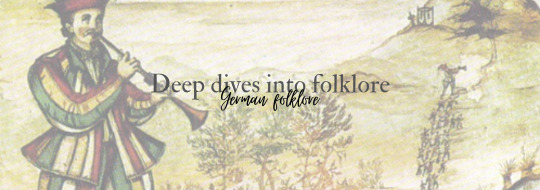
Embedded within the cultural fabric of Germany lies a trove of enchanting narratives, a testament to the nation's rich heritage and historical tapestry. German folklore, a captivating blend of ancient pagan beliefs, medieval epics, and timeless fairy tales, unveils a world steeped in myth and tradition. This essay embarks on a comprehensive exploration of German folklore, tracing its origins, introducing mythical figures, unraveling folk traditions, and assessing its profound influence on literature and popular culture. Within this intricate tapestry, the diverse tales of Germanic lore reveal not only the evolution of storytelling but also the enduring spirit that continues to captivate audiences across time and borders.
I. Ancient Roots and Pagan Influences:
Germanic folklore has its origins in the pre-Christian beliefs of the Germanic tribes. The pantheon of gods and goddesses, such as Woden (Odin), Thor, and Freyja, held sway over the imaginations of early Germanic people. The Eddas, epic poems preserved in Iceland, provide glimpses into the cosmology and mythology of the Germanic peoples, offering tales of creation, heroic exploits, and the prophesied end of the world, Ragnarök.
II. Germanic Mythical Figures:
The Nibelungenlied: The Nibelungenlied, a medieval German epic, tells the tragic tale of Siegfried, the dragon-slayer, and the curse surrounding the Nibelung treasure. This epic, with its themes of heroism, betrayal, and revenge, has left an indelible mark on German folklore and is a precursor to later literary works, including Wagner's operatic adaptation, "Der Ring des Nibelungen."
Brothers Grimm Fairy Tales: Perhaps the most famous collectors of German folklore, the Brothers Grimm, Jacob and Wilhelm, compiled a vast collection of fairy tales that have become timeless classics. Stories like "Cinderella," "Snow White," and "Hansel and Gretel" are embedded in global consciousness, showcasing the enduring appeal of German folk narratives.
III. Folk Traditions and Creatures:
German folklore is teeming with a diverse array of folk traditions and mythical creatures, each with its own regional variations. From benevolent spirits to malevolent beings, these entities populate the cultural landscape of Germany.
Kobolds and Elves: German folklore features kobolds, mischievous household spirits, and elves that are often associated with forests and natural landscapes. These beings, sometimes helpful, sometimes capricious, embody the close connection between the Germanic people and their natural surroundings.
The Lorelei: Along the Rhine River, the Lorelei is a legendary siren or mermaid who lures sailors to their doom with her enchanting song. This myth has inspired numerous poems and songs, becoming a symbol of the dangers and allure of the river.
IV. Impact on Literature and Popular Culture:
German folklore has left an indelible mark on literature and popular culture, both within Germany and globally. Beyond the Brothers Grimm's fairy tales, Germanic mythology has influenced literary giants like J.R.R. Tolkien, whose Middle-earth draws inspiration from Norse and Germanic mythologies.
Wagner's Operas: Richard Wagner's operatic masterpieces, including "Der Ring des Nibelungen" and "Tristan und Isolde," draw heavily from Germanic mythology. Wagner's reinterpretation of these myths has become iconic in the world of classical music and opera.
Contemporary Fantasy: German folklore continues to influence contemporary fantasy literature and film. Authors and filmmakers often draw on Teutonic themes to create worlds filled with magical creatures, quests, and epic struggles between good and evil.
German folklore stands as a testament to the enduring power of storytelling in shaping cultural identity. From ancient pagan beliefs to the enchanting tales of the Brothers Grimm, the narratives of German folklore have transcended time, leaving an indelible mark on literature, art, and popular culture. As these tales persist and evolve, they provide a window into the collective imagination of the Germanic people and invite ongoing exploration and reinterpretation in the ever-changing landscape of global storytelling.
Taglist (reply or reblog to be added): @axl-ul @crow-flower @thoughts-fromthevoid @alderwoodbooks @harleyacoincidence @tuberosumtater @sonic-spade @theonlygardenia @holymzogynybatman @nulliel-tres @w0rkah0licz @sylvanthorn @tigertaurus22 @profiterole-reads @mathias-musings @1899adgg1997tbmd @grimmparanormalinvestigations
#writeblr#writers of tumblr#writing#bookish#booklr#fantasy books#creative writing#book blog#ya fantasy books#ya books#writers block#national novel writing month#writers#teen writer#tumblr writers#writblr#writer problems#writerblr#writers community#writers corner#writers on tumblr#writerscommunity#writerslife#writing blog#deep dives into folklore#deep dives#german folklore#german mythology
21 notes
·
View notes